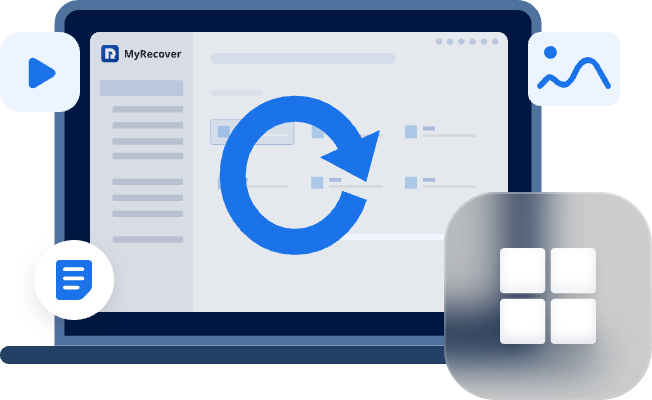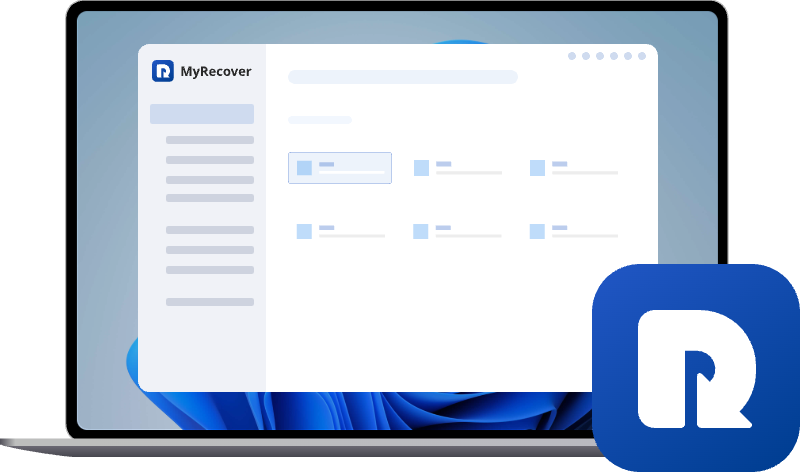How to Get Files Off a Hard Drive That Won’t Turn On (2025 Guide)
When a hard drive won’t power on, it doesn’t necessarily mean your files are gone forever. You’ll learn how to get files off a hard drive that won't turn on with just a few clicks. Whether you’re dealing with a laptop, desktop, or external hard drive, this article offers a practical roadmap to bring your lost data back safely.
Why a Hard Drive Won’t Turn On?
A hard drive that refuses to power up is one of the most frustrating computer problems, especially if it contains critical work files, personal photos, or project data. This will prevent you from accessing all the files on the hard drive.
If the issue occurs on an SSD, the situation will be worse. It may cause your computer to crash with a blue or black screen, leaving it unable to boot into Windows, let alone access any files on the device. For users who store important data on their computers, this is nothing short of a disaster.
When your hard drive won’t turn on, it can be due to a range of causes:
🔔Power Supply or Connection Issues
Loose or damaged cables, faulty power adapters, or dead USB ports can stop the drive from receiving power.
📢Faulty External Enclosure or Adapter
If you’re using an external hard drive, the issue might lie in the enclosure’s controller board rather than the drive itself.
💽Internal Hardware Failure
HDDs rely on delicate moving parts. If the spindle motor fails or the read/write head is damaged, the drive may not spin up at all, all of which indicates internal failure.
📂Corrupted Firmware or File System
Even if your drive powers on, it might not show up in File Explorer due to corrupted firmware, partition table, or file system errors.
🛠️Physical Damage
External drives are vulnerable to drops, shocks, or extreme temperatures. Physical damage to the logic board or connectors can interrupt power delivery entirely.
💡BIOS or Driver Problems
If your internal drive isn’t recognized in BIOS, it could be disabled in BIOS or missing essential drivers. Outdated firmware or corrupted drivers can also cause detection issues.
Preliminary Checks Before Recovery
Before jumping straight into more professional recovery methods, it’s wise to perform a few basic checks. These steps can help you identify whether the problem lies with the drive itself, its connection, or your computer. By ruling out simple hardware or recognition issues first, you’ll save time and reduce the risk of further data loss.
🔥1. Try Connecting the Hard Drive to Another PC or USB Port
Disconnect the hard drive from your current computer and plug it into another USB port or, better yet, another computer. Wait a few seconds to see if it powers on or gets detected automatically.
🔥2. Use a SATA-to-USB Adapter or External Enclosure
Carefully remove the drive and attach the SATA interface to the adapter or enclosure. Then, plug it into your PC via USB and see if it spins up or shows in File Explorer.
🔥3. Listen for Unusual Noises
If you hear clicking, grinding, or beeping sounds, it’s a red flag for internal mechanical failure, such as a damaged spindle or head crash.
🔥4. Check Disk Management or Device Manager
Connect the hard drive to a working computer and open Disk Management. If the drive shows as "Unknown", "Unallocated", or "Not Initialized", it means the drive is being detected but the partition table is damaged. Alternatively, open Device Manager to see if the system recognizes the hardware itself.
How to Get Files off a Hard Drive That Won't Turn on
Once you’ve verified the basic connections and confirmed your drive is detectable (even if inaccessible), you’re ready to move on to data recovery. Whether your hard drive won’t boot or fails to open in File Explorer, there are several ways can help you extract files safely from the drive that won't turn on.
Solution 1. Access the Drive Using a USB Boot Disk
If the issue is with the system disk, it will render your computer completely unable to start. A bootable USB recovery drive can help you start your computer without relying on the internal hard drive. Then you can access the hard drive and get files off it.
Step 1. Create a USB recovery disk on another working computer and insert the bootable USB into the unbootable computer.
Step 2. Enter the BIOS and change the boot sequence, then boot the computer from USB recovery disk.
Step 3. Once the computer starts successfully, you can access the hard drive and retrieve the data on it via File Explorer or Command Prompt.
Solution 2. Recover Data from Hard Drive that Won't Turn on with MyRecover
If you want to extract files directly from a crashed computer, the professional data recovery tool MyRecover is your ideal choice. Even if the drive is unbootable, MyRecover can read the data directly, making it perfect for situations like retrieving files from a laptop that won’t turn on Windows or recover files from crashed Windows.

- Intuitive interface requiring no technical expertise.
- Faster scanning compared to command-line tools.
- Work on HDD, SSD, USB flash drive, memory card, etc.
- Compatible with all Windows operating systems and Server.
Step 1. Download and install MyRecover on a working computer from Microsoft Store. Insert a USB into the computer.
If there are other files on the USB drive, it’s best to back them up first, as the USB will be formatted during the process of creating a bootable USB drive.
Step 2. Run MyRecover and select "PC Crashed Recovery" section, then click "USB Boot Device" and "Create" to start the process.
Step 3. MyRecover will pop up a prompt indicating that the USB drive will be formatted. Click "Yes" and wait for several minutes until the bootable USB drive to be created successfully.
Step 4. Insert the USB bootable media into the unbootable computer and choose the USB to boot the computer.
Step 5. Your computer will automatically enter the interface of MyRecover. Select a hard drive with lost files to scan and click "Scan".
-
If needed, you can also click "Deep Scan" after the quick scan finishes to find more file fragments.
Step 6. Choose the files you would like to recover from the recoverable lists, then click "Recover".
Step 7. Select a safe location to save the recovered files. In this case, you'd better to choose a healthy external hard drive to store them.
Once the process is finished, the message "Files have been recovered successfully" will pop up. You can access the recovered files in the destination folder path by clicking "Browse" button.
Solution 3. Contact Recovery Service
If your drive shows no power, unusual noises, or burning smell, it might be suffering from mechanical damage or circuit board failure. In such cases, don’t attempt to open it yourself, it could make recovery impossible. Instead, contact a certified data recovery service. They have cleanroom facilities, specialized tools, and experienced engineers to retrieve data from physically damaged drives.
Final Words
When your hard drive won’t turn on, it’s easy to assume your data is gone forever. But in most cases, it’s not. Unbootable hard drive may feel daunting, but with patience and the right tools like MyRecover, you can bring your valuable information back to life and safeguard it better in the future.
For IT professionals, service providers, or anyone managing multiple devices, the Technician Edition of MyRecover offers a comprehensive business data recovery solution. It supports use on multiple systems with a single license and is the superior choice for business & MSPs.


